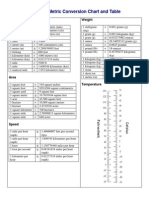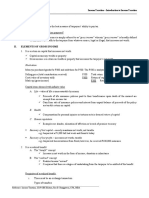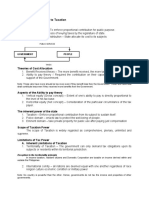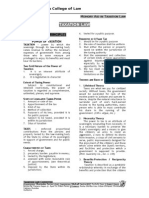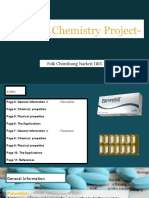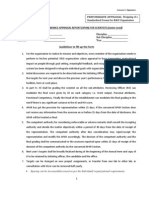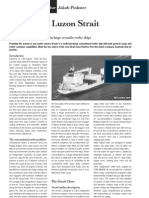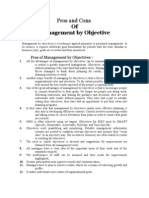0%(1)0% found this document useful (1 vote)
4K viewsINCOME TAXATION Tabag Summary Chapter 1 and Chapter 2 Docx (Repaired)
INCOME TAXATION Tabag Summary Chapter 1 and Chapter 2 Docx (Repaired)
Uploaded by
BeusThe document discusses taxation and the power of taxation as an inherent power of the sovereign state. It defines taxation as the process by which the government imposes burdens on taxpayers to raise revenue for legitimate government purposes. The key points are:
1) Taxation is an inherent power of the state that is legislative in character and exempts government entities.
2) The purposes of taxation are to provide revenue to support the government and promote general welfare.
3) Theories of taxation include the necessity theory, which views taxation as necessary to preserve state sovereignty, and the lifeblood theory, which sees taxation as vital to fund basic government functions.
4) Taxation has the characteristics of being an enforced contribution
Copyright:
© All Rights Reserved
Available Formats
Download as DOCX, PDF, TXT or read online from Scribd
INCOME TAXATION Tabag Summary Chapter 1 and Chapter 2 Docx (Repaired)
INCOME TAXATION Tabag Summary Chapter 1 and Chapter 2 Docx (Repaired)
Uploaded by
Beus0%(1)0% found this document useful (1 vote)
4K views3 pagesThe document discusses taxation and the power of taxation as an inherent power of the sovereign state. It defines taxation as the process by which the government imposes burdens on taxpayers to raise revenue for legitimate government purposes. The key points are:
1) Taxation is an inherent power of the state that is legislative in character and exempts government entities.
2) The purposes of taxation are to provide revenue to support the government and promote general welfare.
3) Theories of taxation include the necessity theory, which views taxation as necessary to preserve state sovereignty, and the lifeblood theory, which sees taxation as vital to fund basic government functions.
4) Taxation has the characteristics of being an enforced contribution
Original Description:
ngiehgpigrofjrof
Original Title
422077435 INCOME TAXATION Tabag Summary Chapter 1 and Chapter 2 Docx (Repaired)
Copyright
© © All Rights Reserved
Available Formats
DOCX, PDF, TXT or read online from Scribd
Share this document
Did you find this document useful?
Is this content inappropriate?
The document discusses taxation and the power of taxation as an inherent power of the sovereign state. It defines taxation as the process by which the government imposes burdens on taxpayers to raise revenue for legitimate government purposes. The key points are:
1) Taxation is an inherent power of the state that is legislative in character and exempts government entities.
2) The purposes of taxation are to provide revenue to support the government and promote general welfare.
3) Theories of taxation include the necessity theory, which views taxation as necessary to preserve state sovereignty, and the lifeblood theory, which sees taxation as vital to fund basic government functions.
4) Taxation has the characteristics of being an enforced contribution
Copyright:
© All Rights Reserved
Available Formats
Download as DOCX, PDF, TXT or read online from Scribd
Download as docx, pdf, or txt
0%(1)0% found this document useful (1 vote)
4K views3 pagesINCOME TAXATION Tabag Summary Chapter 1 and Chapter 2 Docx (Repaired)
INCOME TAXATION Tabag Summary Chapter 1 and Chapter 2 Docx (Repaired)
Uploaded by
BeusThe document discusses taxation and the power of taxation as an inherent power of the sovereign state. It defines taxation as the process by which the government imposes burdens on taxpayers to raise revenue for legitimate government purposes. The key points are:
1) Taxation is an inherent power of the state that is legislative in character and exempts government entities.
2) The purposes of taxation are to provide revenue to support the government and promote general welfare.
3) Theories of taxation include the necessity theory, which views taxation as necessary to preserve state sovereignty, and the lifeblood theory, which sees taxation as vital to fund basic government functions.
4) Taxation has the characteristics of being an enforced contribution
Copyright:
© All Rights Reserved
Available Formats
Download as DOCX, PDF, TXT or read online from Scribd
Download as docx, pdf, or txt
You are on page 1of 3
TAXATION – the process by which the sovereign, through its law-
making body, imposes burdens for the purpose of a) It is inherent in sovereignty.
raising revenues to carry out legitimate objects of the -can enforce contribution in the absence of law
government
b) It is legislative in character.
TAXES – the enforced contributions levied by the law-making body of -cannot be exercised by executive and juridical branches
the state for the support of the government and all
c) Exemption of government entities, agencies and instrumentalities.
the public needs.
d) International Comity
3 INHERENT POWERS OF THE STATE e) Limitation of territorial jurisdiction
f) Strongest among all the inherent powers of the state
1. Police Power- the power of promoting public welfare and
regulating the use of liberty and property. Agencies performing governmental function are tax exempt unless
2. Power of Taxation – the power which raises revenue for the expressly taxed
expenses of the government Agencies performing proprietary functions are subject to tax
3. Power of Eminent Domain – the power to acquire private property unless expressly exempted
for public purpose upon payment of just GOCCs performing proprietary functions are subject to tax,
compensation however the following are granted tax exemptions:
Government Service Insurance System (GSIS)
PURPOSES OF TAXATION
Social Security System (SSS)
1. Primary: Revenue or Fiscal Purpose
Philippine Health Insurance Corporation (PHIC)
- to provide funds or property with which to promote general
Philippine Charity Sweepstakes Office (PCSO)
welfare and protection of its citizens
Local Water Districts (RA 10026)
2. Secondary: Regulatory Purpose CLASSIFICATION OF TAXES
- employed as a devise for regulation or control 1. As to scope:
Effects: ● Promotion of General Welfare National- imposed by the national government
● Reduction of Social Inequality Local – imposed by the local government
● Economic Growth
2. As to subject matter or object:
THEORIES OF TAXATION Personal, poll, or capitation – tax of a fixed amount imposed
1. Necessity Theory upon individual residing within a specified territory.
- to preserve the state’s sovereignty Property – tax imposed on property in proportion to its value
- a means to give for protection and facilities Excise – tax on certain rights and privileges (sin products or
2. Lifeblood Theory imported goods)
- used to continue to perform the government’s basic function of 3. As to who bears the burden:
serving and protecting its people Direct – taxpayer cannot shift to another
- give tangible and intangible benefits Indirect – indemnify himself at the expense of another
Basis of Taxation – The government may be able to perform its 4. As to determination of fixed amount:
functions while the citizens may be secured in the enjoyment of the Specific- tax of fixed amount by number, standard of weight,
benefits. or measurement
MANIFESTATION OF LIFEBLOOD THEORY Ad valorem – tax of fixed proportion of the value of the
1. Rule of “No Estoppel against the government” property
2. Collection of taxes cannot be stopped by injunction 5. As to purpose:
Court of Tax Appeals – have the authority to grant injunction to Primary, Fiscal, or Revenue Purpose
restrain collection of internal revenue tax, fee or charge Secondary, Regulatory, Special, or Sumptuary Purpose
3. Taxes could not be the subject of compensation or set-off 6. As to graduation or rate:
Tax is compulsory not bargain. Proportional – tax based on fixed percentages of amount
4. Right to select objects (subjects) of taxation Progressive – tax the rate of which increases as the tax base
a) Subject or object to be taxed or bracket increases
b) Purpose of the tax (as long as it is a public purpose) Regressive - tax the rate of which decreases as the tax base
c) Amount or rate of the tax or bracket increases
d) Kind of tax
e) Apportionment of the tax 7. As to taxing authority:
f) Situs (place) of taxation National – imposed under National Internal Revenue Code,
g) Manner, means, and agencies of collection of the tax collected by Bureau of Internal Revenue
5. A valid tax may result in the destruction of the taxpayer’s property. Local – imposed by LGUs
Lawful tax cannot be defeated.
ELEMENTS OF SOUND TAX SYSTEM
Bring out the insolvency of the taxpayer
Forfeiture of property through police power a. Fiscal Adequacy – sources must be adequate
b. Theoretical Justice or Equity – tax should be proportionate
SCOPE OF TAXATION
c. Administrative Feasibility – law must be capable of effective and
The power of taxation is the most absolute of all the powers of the
efficient enforcement
government.
a) Comprehensive – covers all (persons, businesses, professions) LIMITIATIONS ON THE STATE’S POWER TO TAX
b) Unlimited – absence of limitations 1. Inherent Limitations
c) Plenary – it is complete 2. Constitutional Limitations
d) Supreme –
ESSENTIAL ELEMENTS OF TAX Progressive System – emphasis on direct taxes
Regressive System – more indirect taxes imposed
a) It is an enforced contribution. Regressive Tax Rates – tax rates which decreases as tax base or
b) It is generally payable in money. bracket increases
c) It is proportionate in character.
d) It is levied on persons, property or right. FACTORS IN DETERMINING THE SITUS OF TAXATION
e) It is levied by the law-making body of the state. a. Subject matter ( person, property, or activity)
f) It is levied for public purpose. b. Nature of tax
ASPECTS OF TAXATION c. Citizenship
a) Levying or imposition of tax d. Residence of the taxpayer
b) Assessment or determination of the correct amount e. Source of Income
c) Collection of tax f. Place of excise, business or occupation being taxed
NATURE/ CHARACTERISTICS OF THE STATE’S POWER OF TAX
TOLL is a sum of money for the use of something which is paid of CITIZENS OF THE PHILIPPINES
the use of a road, bridge or public nature. 1. Born with father and/or mother as Filipino citizens
2. Born before Jan. 17,1973 of Filipino mother who elects Philippine
PENALTY is a sanction imposed as a punishment for violation of citizenship upon reaching the age of maturity
law or acts deem injurious. 3. Acquired Philippine citizenship after birth (naturalized) in
SPECIAL ASSESSMENT is an enforced proportional contribution accordance with Philippine Laws
from owners of the lands for special benefits resulting from public
improvements. NONRESIDENT CITIZEN OF THE PHILIPPINES
Characteristics: a. Levied only on land 1. Establishes to the satisfaction of the Commissioner of Internal
b. Not a personal liability of the person assessed Revenue, the fact of his physical presence abroad with a definite
c. Based wholly on benefits (not necessary) intention to reside therein
d. Exceptional both as to time and place 2. Leaves the Philippines during the taxable year to reside abroad:
REVENUE refers to all funds or income derives by the government. As an immigrant
For employment on a permanent basis
SUBSIDY is a pecuniary aid directly granted by the government to For work and derives income that requires him to be
an individual or enterprise deemed beneficial to the public. physically abroad most of the time during the taxable year
PERMIT or LICENSE is a charge imposed under the police power for 3. A citizen of the Philippines who shall have stayed outside the
purposes of regulation. Philippines for one hundred eighty-three days (183) or more by
the end of the year.
CUSTOMS DUTIES are taxes imposed on goods exported from or
imported into a country. A Filipino citizen taxpayer not classified as nonresident citizen is
considered a RESIDENT CITIZEN for tax purposes.
TARIFF is the system of imposing duties on the importation or
exportation of goods. An ALIEN is a foreign-born person who is not qualified to acquire
Philippine citizenship by birth of after birth.
DIRECT DOUBLE TAXATION means taxing twice:
1. By the same taxing authority, jurisdiction or taxing district Section 22(F) of the Tax Code defines RESIDENT ALIENS as an
2. For the same purpose individual whose residence is within the Philippines and who is not
3. In the same year or taxing period a citizen thereof.
4. Same subject or object The term NONRESIDENT ALIEN under Section 22(G) of the Tax
5. Same kind or character of the tax Code means an individual whose residence is not in the Philippines
and who is not a citizen thereof.
MEANS OF AVOIDING THE BURDEN OF TAXATION
Under Section 22(S) of the Tax Code, “trade or business” includes
1. Shifting – the transfer of the burden of tax by the original payer to performance of the functions of a public service or performance of
someone else personal service in the Philippines.
2. Transformation – the producer pays the tax and endeavor to
A nonresident alien not engaged in trade or business is subject to
recoup himself by improving his process of production
25% income tax based on gross profit from all sources within the
3. Evasion – the use of illegal means to defeat or lessen tax
Philippines.
4. Tax Avoidance – the exploitation of legally permissible alternative
tax rates of assessing taxable income to reduce
APPLICABLE TAXES AND TAX RATES
tax liability
1. Classification of the Taxpayer
5. Exemption – the grant of immunity to particular persons of a
2. Source of Income
particular class
Taxpayer Tax Base Source of taxable Income
6. Capitalization – the reduction in the selling price of income
RC Net Income Within and without
producing property by an amount equal to the
capitalized value NRC, RA,NRA-ETB Net Income Within
7. Avoidance – the tax saving device within the means sanctioned by NRA-NETB Gross Income Within
law.
3. Type of Income (APPLICABLE TAX)
SOURCES OF TAX LAWS a) Ordinary or regular income (GRADUATED RATE)
1. Constitution – refers to income such as compensation income, business
2. National Internal Revenue Code income, and income from practice of profession
3. Tariff and Customs Code b) Passive income (FINAL WITHHOLDING TAX)
4. Local Government Code (Book II) – subject to final withholding taxes are certain passive
5. Local tax ordinances/ City or municipal tax codes incomes from sources within the Philippines such as:
6. Tax treaties and international agreements Interest income
7. Special Laws Dividend Income
8. Decision of the Supreme Court and the Court of Tax Appeals Royalties
9. Revenue rules and regulations and administrative ruling and opinion Prizes
Other winnings
c) Capital gains subject to gains tax (CAPITAL GAIN TAX)
INDIVIDUAL TAXPAYERS are natural persons with income derived from
Capital gains from sale of shares of stocks of a
within the territorial jurisdiction of taxing authority. They are classified
domestic corporation
as:
Capital gains from sale of real property in the
1. Resident Citizens(RC) ● Engaged in trade/business
Philippines
2. Nonresident Citizens (NRC) (NRA-ETB)
3. Resident Aliens (RA) ● Nonresident aliens not engaged Income Tax (TRAIN Law 2018-2022)
4. Nonresident Aliens (NRA) in trade or business (NRA-NETB) Below 250,000 Exempt
250,000-400,000 20% excess of 250,000
Importance of classification: 400,000-800,000 30,000 + 25% excess of 400,000
They differ as to: 800,000-2,000,000 130,000 + 30% excess of 800,000
Situs of income 2,000,000-8,000,000 490,000 + 32%excess of 2,000,000
Manner of computing tax Above 8,000,000 2,410,000 + 35% excess of 8,000,000
Treatment of certain passive incomes
Allowable deductions
References in the tax choice
Under RA 10963 (TRAIN Law), self-employed is defined as a sole MWE are exempt from income tax on:
proprietor or an independent contractor who reports income earned 1. Minimum wage
from self-employment. 2. Holiday pay
3. Overtime pay
PROFESSIONAL is a person formally certified by professional body
4. Night shift differential
belonging to a specific profession.
5. Hazard pay
Regular income of SELF-EMPLOYED &/or PROFESSIONALS (SEP)
FILING OF INCOME TAX RETURNS
amounting to more than 250,000 but with a gross sales and other
operation income not exceeding 3M shall have the option to avail 8% BASIC TAX
tax. For Purely Compensation Income Earners
On or before April 15 of the succeeding year
FINAL WITHHOLDING TAX is a kind of tax, which is prescribed on
“certain income” derived from the Philippine sources. For Business Income Earners
The individual taxpayer is required to file a quarterly tax
RR- 14-2012 defines DEPOSIT SUBSITUTES as an alternative form of
return ( May 15, Aug 15, Nov 15, and April 15)
obtaining funds from the public other than deposits.
FINAL WITHHOLDING TAX ON PASSIVE INCOME
Under tax code, the following are ordinary assets:
Prior to 2018 - January to November – 10th day of the month
1. Stock in trade of the tax payer or other property of a kind
December – January 15
2. Property used in trade or business subject to depreciation
2018 – not later than the last day of the month
3. Real property held by the taxpayer primarily for sale to
customers in the ordinary course of business CAPITAL GAINS TAX
4. Real property used in trade of the taxpayer a. Share of Stock
Ordinary Return – 30 days after each transaction
Gain on sale of ordinary assets is commonly known as ordinary or
Final Consolidated Return – on or before April 15 of the
regular income | classified as capital gains.
following year
CAPITAL GAINS may be: b. Real Property – 30 days following each sale or other
Subject to CAPITAL GAINS TAX (CGT) pertain to sale of: disposition
a) Shares of stock of a domestic corporation sold directly to a
MANNER OF FILING
buyer
a. Manual Filing
Prior to 2018 – 5% to 100,000 ; 10% to excess
b. Electronic Filing and Payment System (EFPS)
2018 – 15% of capital gain
c. eBIR Forms
b) Sale of real properties located in the Philippines
1st installment: at the time of filing the annual ITR
CGT = 6% of the higher of GSP and FMV
2nd installment: on or before October 15 following the close of the
OTHER PERCENTAGE TAX is not an income tax but a business tax. calendar year
The applicable tax for this is known as “stock transaction tax.”
PLACE OF FILING INCOME TAX RETURN
Prior to 2018 – ½ of 1% of GSP
1. Authorized Agent Banks
2018 – 6/10 of 1% of GSP
2. Revenue District Officer
Subject to Basic Tax – examples: 3. Collection Agent
a) Sale of Share of foreign corporations 4. Duly Authorized City or Municipal Treasurer
b) Sale of real properties located abroad
PERSONS REQUIRED TO FILE INCOME TAX RETURN
c) Sale of other personal assets other than share of stock of
domestic corporations 1. Individuals engaged in business and/or practice of profession
2. Individuals deriving compensation from two or more employers
PRINCIPAL RESIDENCE is the family home of the individual taxpayer
concurrently at any time during the taxable year
which refers to his dwelling house including his family.
3. Employees deriving compensation income, the income tax of
REQUISITES OF TAX EXEMPTION which has not been withheld correctly
4. Individuals deriving other non-business, non-professional-related
1. The proceeds are fully utilized in acquiring or constructing a new income in addition to compensation income not otherwise
principal residence within 18 calendar months from the date of subject to final tax
disposition. 5. Individuals receiving purely compensation income from a single
2. The historical cost or adjusted basis of the real property sold or employer
disposed shall be carried over to the new principal residence built 6. Non-resident alien engaged in trade or business in the Philippines
or acquired. deriving purely compensation income
3. The BIR shall have been duly notified by the taxpayer within 30
days from the date of sale or disposition through a prescribed PERSONS NOT REQUIREDTO FILE INCOME TAX RETURN
return of his intention to avail of the tax exemption.
4. The tax exemption can only be availed of once every 10 years. 1. An individual earning purely compensation income whose taxable
FORMAT IN COMPUTING TAXABLE INCOME income does not exceed 250,000.
a. Pure Compensation Income Earner 2. An individual whose income tax has been correctly withheld by
b. Pure Business Income Earner his employer
c. Mixed Income Earner 3. An individual whose sole income has been subjected to final
withholding tax
Benefits for Senior Citizen and PWDs: 4. Minimum wage earners, the Certificate of Withholding filed by
20% discount and exemption from VAT on their purchase of the respective employers, duly stamped “Received” by the
specified goods and services Bureau
P500 monthly social pension, for indigent senior citizens
Death benefit assistance SUBSITUTED FILING OF INCOME TAX RETURNS (ITR)
5% discount on utilities
Income tax exemption for minimum wage earners of for Under RA 9504 and RR 10-2008, individual taxpayers may no
SC/PWDs whose annual taxable income is not more than 250,000 longer file income tax return provided he has (all the requirements
must be satisfied):
The term “statutory minimum wage earner (SMW)” or “minimum 1. Receiving purely compensation income, regardless of amount
wage earner (MWE)” under RA 9504 shall refer to a worker in the 2. The amount of income tax withheld by the employer is correct
private sector paid the statutory minimum wage. (Tax due = Tax withheld)
3. Only one employer during taxable year
The rate is fixed by the Regional Tripartite Wage and Productivity 4. If married, the employee’s spouse also complies with all the three
Board as defined by the Bureau of Labor and Employment Statistics. aforementioned conditions, or otherwise receives no income.
You might also like
- Income-Taxation Edt 2023 Solman-2Document35 pagesIncome-Taxation Edt 2023 Solman-2bth chee100% (5)
- Income Taxation - Win Ballada 19th EditionDocument11 pagesIncome Taxation - Win Ballada 19th EditionAshley Gomez50% (2)
- Income Taxation 2021 by Rex BanggawanDocument743 pagesIncome Taxation 2021 by Rex BanggawanHoney OmosuraNo ratings yet
- Printable Metric Conversion Chart and TableDocument2 pagesPrintable Metric Conversion Chart and TablePhy Chem33% (3)
- 14.0 Final Quiz 1 Tax On IndividualsDocument8 pages14.0 Final Quiz 1 Tax On IndividualsRezhel Vyrneth Turgo100% (1)
- Tax 301 - Income Taxation Module 1 Fundamentals of TaxationDocument11 pagesTax 301 - Income Taxation Module 1 Fundamentals of TaxationFallen Hieronymus100% (2)
- Science Grade 10 Research Q1 Module 1Document32 pagesScience Grade 10 Research Q1 Module 1Lsths CamNorte92% (13)
- Gross Income (Exclusions and Inclusions From Gross Income) - REVISED 2022Document34 pagesGross Income (Exclusions and Inclusions From Gross Income) - REVISED 2022rav dano100% (2)
- Chapter 3 - Introduction To Income TaxationDocument4 pagesChapter 3 - Introduction To Income TaxationRoshel Rombaoa100% (1)
- Income Taxation Edt 2022 Sol ManDocument35 pagesIncome Taxation Edt 2022 Sol ManJessa50% (2)
- Income Taxation NotesDocument14 pagesIncome Taxation Notescristiepearl100% (6)
- Income Taxation Notes On BanggawanDocument5 pagesIncome Taxation Notes On BanggawanHopey100% (4)
- Income TaxationDocument211 pagesIncome Taxationfritz100% (7)
- Income Taxation Solution Manual 2019 ED Income Taxation Solution Manual 2019 EDDocument40 pagesIncome Taxation Solution Manual 2019 ED Income Taxation Solution Manual 2019 EDSha Leen100% (2)
- Choros No 1 by Heitor Villa-Lobos PDFDocument6 pagesChoros No 1 by Heitor Villa-Lobos PDFJuan Manuel Navarro Ameller100% (1)
- Income Taxation Banggawan - Chapter 1Document5 pagesIncome Taxation Banggawan - Chapter 1Frances Garrovillas100% (13)
- Chapter 14-Regular Income Taxation: IndividualsDocument28 pagesChapter 14-Regular Income Taxation: Individualsarjay matanguihan100% (3)
- Passive Income Subject To Final TaxDocument2 pagesPassive Income Subject To Final TaxKyle LauritoNo ratings yet
- Income Taxation Reviewer - San BedaDocument128 pagesIncome Taxation Reviewer - San BedaJennybabe Peta100% (10)
- Quiz 002 Classification of Taxpayers - PALACIODocument3 pagesQuiz 002 Classification of Taxpayers - PALACIOPinky Daisies100% (1)
- General Principles of Taxation ReviewerDocument62 pagesGeneral Principles of Taxation ReviewerAB Cloyd100% (1)
- Chapter 13 Part 1Document11 pagesChapter 13 Part 1Danielle Angel MalanaNo ratings yet
- Income Tax On Individuals - Ust PDFDocument15 pagesIncome Tax On Individuals - Ust PDFKana Lou Cassandra Besana100% (1)
- Organic Chemistry ProjectDocument11 pagesOrganic Chemistry Projectapi-463768793No ratings yet
- INCOME TAXATION Tabag Summary Chapter 1 and Chapter 2 PDFDocument3 pagesINCOME TAXATION Tabag Summary Chapter 1 and Chapter 2 PDFPinky Daisies100% (2)
- Summary Chapters 1&2 - Income Taxation Summary Chapters 1&2 - Income TaxationDocument4 pagesSummary Chapters 1&2 - Income Taxation Summary Chapters 1&2 - Income TaxationSha LeenNo ratings yet
- Chapter 10 Tabag - Serrano NotesDocument5 pagesChapter 10 Tabag - Serrano NotesNatalie SerranoNo ratings yet
- Chapter 1 Introduction To Taxation: Chapter Overview and ObjectivesDocument30 pagesChapter 1 Introduction To Taxation: Chapter Overview and ObjectivesNoeme LansangNo ratings yet
- 8.2 Assignment - Regular Income Tax For Individuals (For Discussion)Document8 pages8.2 Assignment - Regular Income Tax For Individuals (For Discussion)Roselyn LumbaoNo ratings yet
- Concept of Income (Accounting For Leasehold Improvements) Accounting Methods Accounting For Leasehold ImprovementsDocument10 pagesConcept of Income (Accounting For Leasehold Improvements) Accounting Methods Accounting For Leasehold ImprovementsShaina SamonteNo ratings yet
- Income Taxation-C1 Notes-Banggawan Income Taxation-C1 Notes-BanggawanDocument8 pagesIncome Taxation-C1 Notes-Banggawan Income Taxation-C1 Notes-BanggawanSha Leen100% (2)
- Tax 301 - Income Taxation Module 1 ExerciseDocument11 pagesTax 301 - Income Taxation Module 1 ExerciseFallen HieronymusNo ratings yet
- Chapter 3Document4 pagesChapter 3Frances Garrovillas100% (2)
- Chapter 3 Income TaxationDocument7 pagesChapter 3 Income TaxationMary Jane PabroaNo ratings yet
- Income Taxation Whole Book Cheat SheetDocument121 pagesIncome Taxation Whole Book Cheat SheetMaryane Angela100% (2)
- Regular Income Tax - Gross IncomeDocument9 pagesRegular Income Tax - Gross IncomeJane50% (2)
- Income Taxation NotesDocument3 pagesIncome Taxation NotesMa. Valerie LabareñoNo ratings yet
- Intax Test BankDocument2 pagesIntax Test BankMitchie FaustinoNo ratings yet
- QUIZ 2 Chapter 1 3 Income TaxationDocument9 pagesQUIZ 2 Chapter 1 3 Income TaxationShawn VerzalesNo ratings yet
- TAX SITUS-It Is The Place or Authority That Has The Right To Impose and Collect TaxesDocument58 pagesTAX SITUS-It Is The Place or Authority That Has The Right To Impose and Collect TaxesTJ Julian Baltazar100% (4)
- Income Taxation Reviewer Banggawan 2019 PDFDocument10 pagesIncome Taxation Reviewer Banggawan 2019 PDFKryzzel Anne Jon100% (1)
- Financial Management Chapter 6 by CabreraDocument34 pagesFinancial Management Chapter 6 by CabreraJhunnie LoriaNo ratings yet
- REO RIT Dealings in PropertiesDocument6 pagesREO RIT Dealings in PropertiesJohn Michael MateoNo ratings yet
- Capital Gains Tax-Chap6Document5 pagesCapital Gains Tax-Chap6Garcia Alizsandra L.No ratings yet
- Notes 1 - Summary Income Taxation Notes 1 - Summary Income TaxationDocument6 pagesNotes 1 - Summary Income Taxation Notes 1 - Summary Income TaxationSha LeenNo ratings yet
- Income Taxation Reviewer Banggawan 2021Document13 pagesIncome Taxation Reviewer Banggawan 2021Merwelyn FradesNo ratings yet
- 93-09 - Capital AssetsDocument8 pages93-09 - Capital AssetsJuan Miguel UngsodNo ratings yet
- Chapter 6 Income Tax by Banggawan Chapter 6 Income Tax by BanggawanDocument11 pagesChapter 6 Income Tax by Banggawan Chapter 6 Income Tax by BanggawanEarth PirapatNo ratings yet
- Chapter 7: Business Taxes: ProblemsDocument8 pagesChapter 7: Business Taxes: ProblemsAva DoveNo ratings yet
- SC and PWD Quizzer TabagDocument5 pagesSC and PWD Quizzer TabagApple Joy SamonteNo ratings yet
- Dealings in Property: Lesson 12Document18 pagesDealings in Property: Lesson 12lcNo ratings yet
- Taxation of IndividualsDocument49 pagesTaxation of IndividualsAnastasha Grey100% (1)
- Chapter 6 Income Tax by BanggawanDocument11 pagesChapter 6 Income Tax by BanggawanEarth Pirapat100% (1)
- Econ DevelopmentDocument21 pagesEcon DevelopmentKheajoy99 KimNo ratings yet
- 0.4-Short Term BudgetingDocument49 pages0.4-Short Term BudgetingMatsuno Chifuyu100% (1)
- IA2 Solutions CH 8 11 Straight ProblemsDocument54 pagesIA2 Solutions CH 8 11 Straight ProblemsswiftwswiftNo ratings yet
- G. Nature, Construction, Application, and Sources of Tax LawsDocument12 pagesG. Nature, Construction, Application, and Sources of Tax LawsDon Dupio100% (1)
- VAT (Chapter 8 Compilation of Summary)Document36 pagesVAT (Chapter 8 Compilation of Summary)Dianne LontacNo ratings yet
- Preliminary Examination in INCOME TAXATION: Accountancy DepartmentDocument6 pagesPreliminary Examination in INCOME TAXATION: Accountancy DepartmentKenneth Bryan Tegerero TegioNo ratings yet
- Chapter 1 To 6 Tax Answers AutosavedDocument33 pagesChapter 1 To 6 Tax Answers AutosavedBisag AsaNo ratings yet
- QUIZ Corporate Income Taxation AnswersDocument4 pagesQUIZ Corporate Income Taxation AnswersAang GrandeNo ratings yet
- 6710923908d9b801b288fb4b-1729139313-1. General Principles of TaxationDocument2 pages6710923908d9b801b288fb4b-1729139313-1. General Principles of Taxationjhanmichaelcesar2No ratings yet
- Taxation Chap 1 2 Tabag GarciaDocument4 pagesTaxation Chap 1 2 Tabag GarciaZedie Leigh VioletaNo ratings yet
- Income Taxation Tabag Summary Chapter 1 and Chapter 2Document4 pagesIncome Taxation Tabag Summary Chapter 1 and Chapter 2angellachavezlabalan.cpalawyerNo ratings yet
- 1691 - Phrasal Verbs Test 08 PDFDocument4 pages1691 - Phrasal Verbs Test 08 PDFPhuong Nghi NguyenNo ratings yet
- Arts10 q4 Week4 v2Document12 pagesArts10 q4 Week4 v2Ryan Dave GarciaNo ratings yet
- Ca Dao Việt NamDocument94 pagesCa Dao Việt NamichimikanjiNo ratings yet
- Junglee Child - Visual Pitch DeckDocument15 pagesJunglee Child - Visual Pitch Decksarah stuntNo ratings yet
- Sabitsana JR V MuerteguiDocument1 pageSabitsana JR V MuerteguiCeresjudicataNo ratings yet
- GREEK ArchtempleetcDocument29 pagesGREEK ArchtempleetcNykha AlentonNo ratings yet
- American Realty Vs Bank of AmericaDocument3 pagesAmerican Realty Vs Bank of AmericaXing Keet LuNo ratings yet
- Scientists Junior AparDocument9 pagesScientists Junior AparSandeep ChaudharyNo ratings yet
- LS Central/LS Nav Cumulative Updates 2007 - 2023, Overview: Industry Feature (With Link To LS Retail Help)Document1,440 pagesLS Central/LS Nav Cumulative Updates 2007 - 2023, Overview: Industry Feature (With Link To LS Retail Help)Sandeep ShettyNo ratings yet
- Company ProfileDocument9 pagesCompany ProfileSamir BiswalNo ratings yet
- Well Logging PDFDocument34 pagesWell Logging PDFarif.tuoNo ratings yet
- Past Simple Irregular Verbs Grammar Guide and Prac Grammar Drills Grammar Guides 79221Document2 pagesPast Simple Irregular Verbs Grammar Guide and Prac Grammar Drills Grammar Guides 79221berkeNo ratings yet
- Unit 10Document28 pagesUnit 10MuhîbNo ratings yet
- Table of Specification (TOS) : - A Teacher's Blueprint in Constructing A Test For Classroom UseDocument15 pagesTable of Specification (TOS) : - A Teacher's Blueprint in Constructing A Test For Classroom UseJuan Miguel100% (2)
- Communication ProcessDocument2 pagesCommunication Processo24558769No ratings yet
- Araling Panlipunan: Quarter 3 - Module 1 Paglakas NG EuropeDocument23 pagesAraling Panlipunan: Quarter 3 - Module 1 Paglakas NG EuropeMuhammad Pandan50% (2)
- Precal 1st Monthly Test AnswersDocument4 pagesPrecal 1st Monthly Test AnswersREGGIE MAIGUENo ratings yet
- Adinkra PatternsDocument54 pagesAdinkra PatternsCatherine Cartwright-Jones100% (5)
- Cambridge IGCSE: ECONOMICS 0455/23Document8 pagesCambridge IGCSE: ECONOMICS 0455/23ShadyNo ratings yet
- OD428598422504149100Document3 pagesOD428598422504149100Samir Ranjan PadhanNo ratings yet
- Contact Details Sia Nodal Officer For NLMDocument6 pagesContact Details Sia Nodal Officer For NLMsreekanth reddyNo ratings yet
- Net Or: From Mainly Network. Every Computer Is To The Network But The May Network 1 3Document5 pagesNet Or: From Mainly Network. Every Computer Is To The Network But The May Network 1 3Barinder SinghNo ratings yet
- Knowledge Sharing Awareness - ENG - FDFDocument5 pagesKnowledge Sharing Awareness - ENG - FDFIvanNo ratings yet
- Reefer Vessel DescriptionDocument8 pagesReefer Vessel Descriptiondario524No ratings yet
- PROS and CONS Managements by ObjectivesDocument2 pagesPROS and CONS Managements by ObjectivesTAS_ALPHA100% (1)
- 20 Minutes PDPR ModuleDocument31 pages20 Minutes PDPR ModuleNanthini SuppiahNo ratings yet



